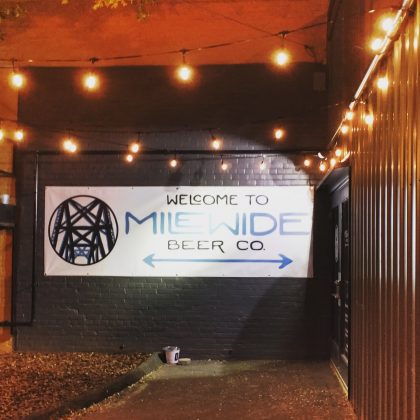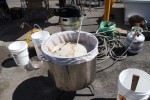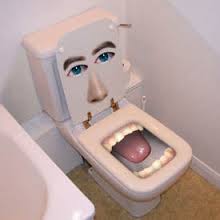As I have done before, I recently ran across some material that interested me and thought I should write about it. The particular material in question this time around is a chapter from Palmer and Kaminski’s Water: A Comprehensive Guide for Brewers, which is part of the BA’s Brewing Elements Series of publications. This is the first one I have had a chance to thumb through (and that is all I have done so far), but I have also obtained the yeast book in that series, so some additional articles about yeast and/or water may be on the near horizon. Anyway, today’s foray into mystical boozemanship will focus on the wastewater treatment chapter in the aforementioned tome. I will mostly just present a slightly digested version of their work with a little of my own knowledge and commentary peppered in. Look them up for a more detailed, albeit less entertaining, version of the topic.
The first question to ask about treatment of brewery wastewater, or effluent, is why it needs to be treated at all. The honest truth is that breweries go through a huge amount of water. The industry average seems to float around 6 times the brewery output. So if your brewery makes 1,000 barrels of beer per year, you are pulling 6,000 annual barrels from your water source. The other side of that fact is that 5,000 barrels are going down the drain. The value of this effluent for human consumption is degraded in the brewery by the addition of chemicals such as sanitizers, acidic and caustic cleaners, the addition of solids like grain, hops, and coagulated proteins, the effects of a variety of brewery microbes such as yeasts and bacteria, and the alteration of both pH and temperature. The treatment of this effluent needs to be done to bring it back to safe drinking water. This is often done by municipal water treatment facilities, especially if the brewery is rather small, but very large breweries often take treatment into their own hands when water companies start to charge higher fees to deal with the quality and/or quantity of effluent the brewery is producing.
Although the particular issues with brewery effluent can be many, there is value in reducing them to one factor that is easy to describe: biochemical oxygen demand (or BOD). This factor is measured by measuring the mg/L of oxygen consumed by bacteria in a test incubator over a five day period. Essentially, it is meant to express how readily the chemicals in the water promote microbial deoxygenation. Ask a biologist why deoxygenated water is bad for an ecosystem.
Wastewater treatment essentially boils down to promoting the controlled microbial digestion of the BOD agents in the effluent that could cause this uncontrolled deoxygenation downstream. Reality, however, is rarely as simple as all that. The actual process of treatment involves removal of solids both large and small, balancing of pH, and then the actual digestion.
Solids removal often happens in two stages: straining of large solids, and filtration of fine solids. The straining is as simple as passing the effluent through some kind of rough screen to pull out the large bits of spent grain and hops, clumps of yeast, proteins, tannins, bottlecaps, dropped gaskets, etc. This can also be done by resting the effluent and letting these things naturally settle to the top or bottom, although that can take substantially more time. After rough straining, finer filtration can occur to remove extremely small or dissolved solids such as remaining hops, proteins, and tannins as well as suspended yeast cells. This can be done with chemical coagulants or membrane-based microfiltration.
The pH of the effluent then needs to be altered so that it will not harm the microbes that will digest it in the next stage. Brewery effluent can contain very high pH caustic cleaners as well as very low pH acid cleaners and sanitizers. Generally a holding tank of some kind can be employed so that the acids and alkalines can neutralize each other over time, but additional acid or alkaline additions are sometimes necessary to balance the effluent.
The last stage of wastewater treatment is to promote the microbial digestion of most of the remaining BOD. This can be done aerobically or anaerobically. Aerobic digestion generally occurs in large ponds where turbulence aerates the effluent and controlled temperature and pH conditions are used to promote the microbial growth necessary to render the water safe again. This is the easiest and most common method. Anaerobic digestion must occur in a sealed tank using microbes that do not like oxygen. The anaerobic microbes can be substantially more fragile but the fact that they produce methane can be worth it for the brewery that chooses to capture, clean, and use that methane as an energy source. Both of these digestions produce a nutrient sludge that can be de-watered and disposed of as solid waste.
Well, that’s a cursory overview of brewery wastewater disposal. After all that talk about effluent, I’m ready for a beer. Until next time, faithful readers, thanks for reading, and happy drinks!
P.S. Remember to let me know if you have some specific topic you would like me to babble about next time. You can tell me in person, by e-mail, or in the comments right down below.






